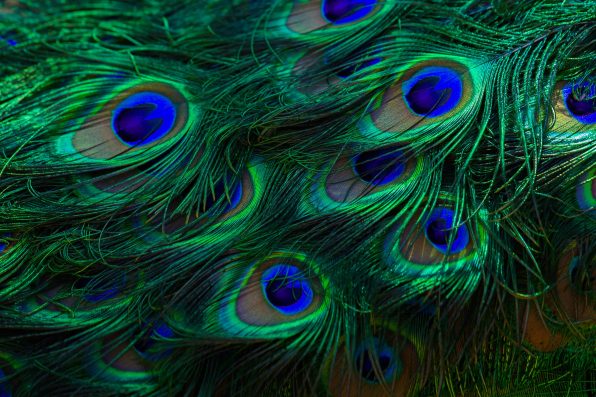A Shipping Magnate Hired An Artist To Redesign His Dining Room In 1876, But The Overzealous Artist Created What’s Now Known As The Peacock Room, Ruining Their Friendship Forever

When shipping magnate Frederick Leyland’s architect Thomas Jekyll fell ill, he turned to the artist James McNeill Whistler to complete renovations in his London home.
Leyland tasked Whistler with some slight alterations to the dining room. He wanted its leather wall coverings to complement Whistler’s artwork, “The Princess from the Land of Porcelain.”
In 1876, Leyland departed from London, leaving Whistler to do his job. When he returned, he discovered that Whistler had done much more than what was asked of him.
Leyland’s already lush space had been transformed into what is known as “The Peacock Room.” Whistler’s work ignited a feud between him and Leyland, destroying their friendship forever.
Whistler was born in Lowell, Massachusetts, in 1834. He left the United States in 1855 to study in Paris before moving to London. He was inspired by the art style of Asia, particularly Japan.
Eventually, he developed a close relationship with Leyland and his family. In 1869, Leyland purchased a grand house in London, which was the same home that Whistler decorated.
While Leland was away from home, he received letters from Whistler detailing the dining room’s redesign and its great expense. On October 21, 1876, Leyland wrote back about how unhappy he was with the artist for not letting him know about the “elaborate scheme of decoration.”
He also emphasized that the renovation was supposed to be small-scale work that would take only a few days to complete.
In 1877, Leyland returned to find his chamber decorated with gold, blue, and green peacock motifs. Peacocks were painted on the shutters, and even the ceiling was covered with designs resembling the bird’s plumage.

Arina B – stock.adobe.com – illustrative purposes only
Whistler had also painted over Leyland’s imported leather wall hangings, which, of course, he wasn’t too happy about.
Immediately, Whistler showed off his work to his friends and the press. Leyland was upset about the public attention to his private space.
He believed the artist had overstepped his boundaries, his time was wasted, and the dining room was ruined. He refused to pay Whistler’s requested fee of 2,000 guineas.
In a letter from July 1877, Whistler wrote, “It is positively sickening to think that I should have labored to build up that exquisite Peacock Room for such a man to live in!”
Whistler had lost his best patron, and to make matters worse for him, no other wealthy figures wanted to hire the artist after hearing about his recklessness.
Soon enough, he went bankrupt. He painted a portrait of Leyland called “The Gold Scab, Eruption in Frilthy Lucre.”
In the portrait, Leyland was depicted as a human-peacock hybrid. He was surrounded by bags of money and was seated in front of a piano on a rooftop. When Whistler was forced out of his home in 1879, he left the painting for Leyland to see.
For some reason, Leyland never had the Peacock Room changed. After Leyland’s death in 1892, the American industrialist Charles Lang Freer acquired Whistler’s masterpiece in 1904.
He had the Peacock Room assembled at his home in Detroit. Then, after Freer died in 1919, it was sent to Washington, D.C. Now, it is housed in the Freer Gallery of Art.
Sign up for Chip Chick’s newsletter and get stories like this delivered to your inbox.
More About:News





